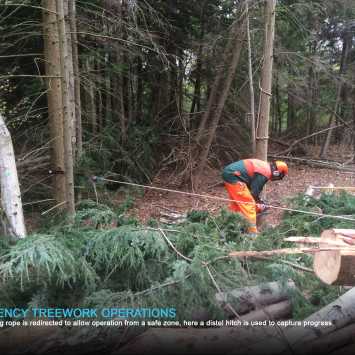Emergency Tree Work Operations & Windblown Trees
This week we are running another Emergency Tree Work Operations training course on our site in Lamberhurst, Kent, and with the weather picking up the trainees may well have an opportunity to put their new skills into practice, maybe a little sooner than they thought….
The last winter was exceptionally wet with several storm events, all resulting in substantial damage, with whole trees uprooted, branches snapped and trees partially blown. The training site was no exception with dozens of trees affected, slowing up progress on the ride improvement works, but on the plus side providing a great training resource.
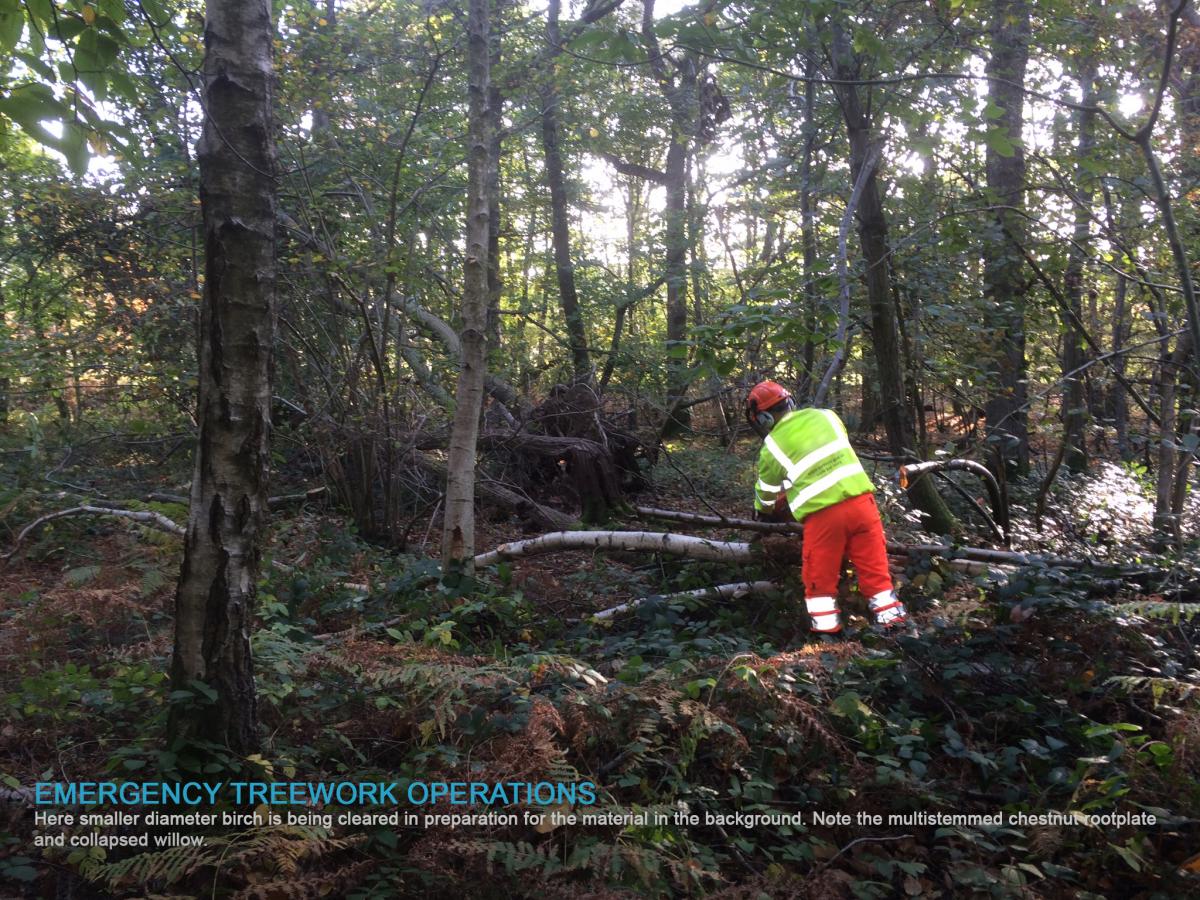
Windblown trees and storm damaged trees present a range of extra hazards, and require careful assessment and specific techniques to deal with them safely, these skills build sequentially on those learnt on the basic maintenance, crosscutting and felling small tree courses. Many clients are surprised to hear that their crosscutting qualification does not cover them for wind damaged trees, but thinking about it the forces involved when making cuts into this highly strained and often less predictable material make this an advanced skill. In addition ground and surrounding conditions are likely to be more constrained in terms of suitable escape and safe zones.
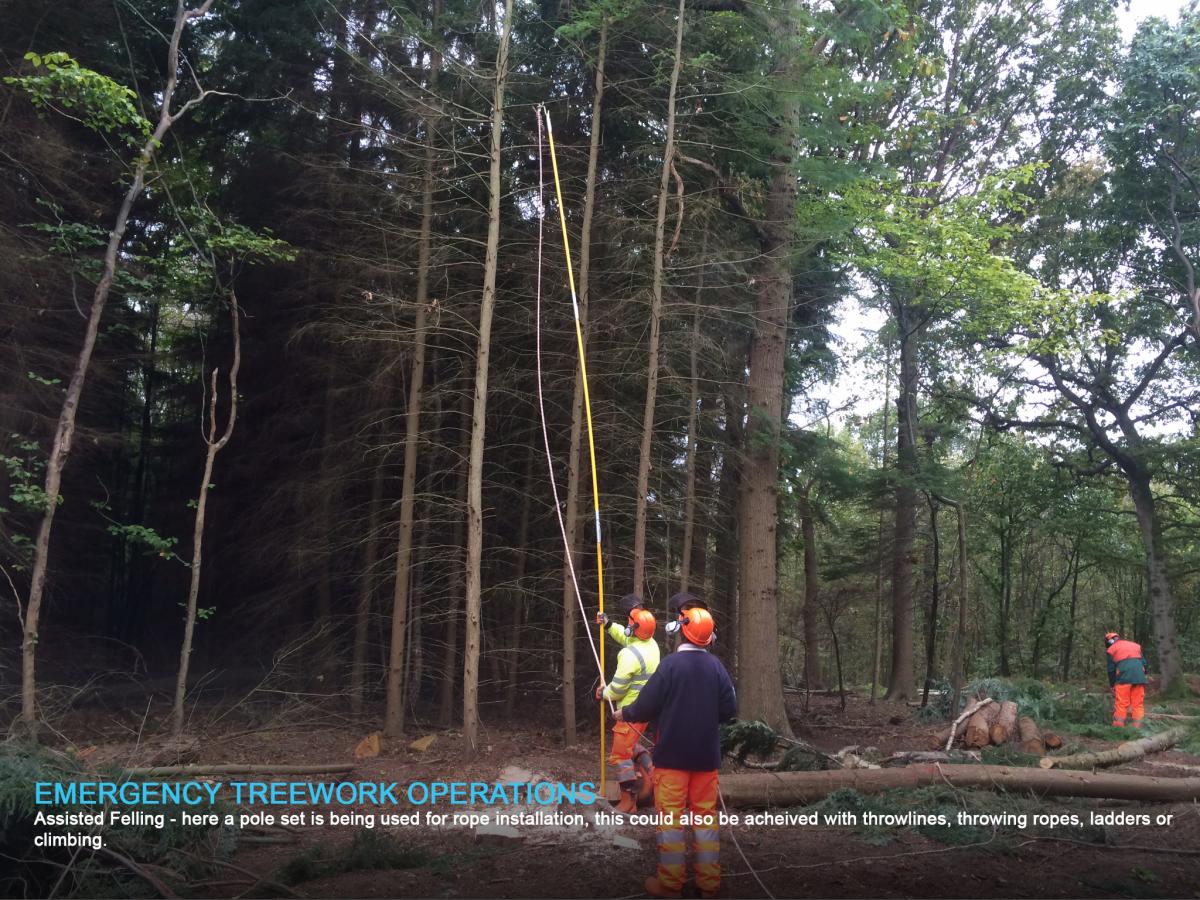
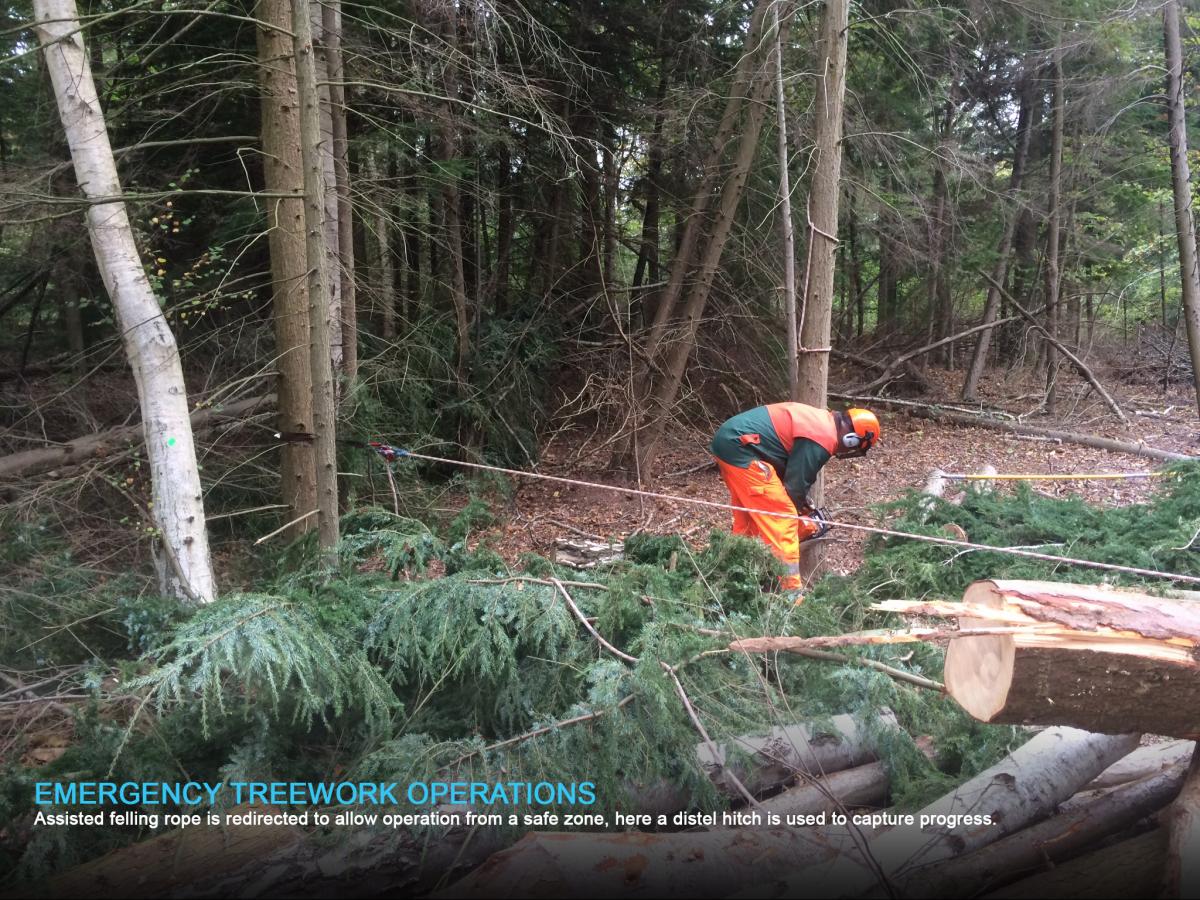
In the past training for dealing with damaged trees has been predominately seen in a forestry context, with training and assessment in individual windblown trees (CS34) or multiple windblown trees units (CS35) available.
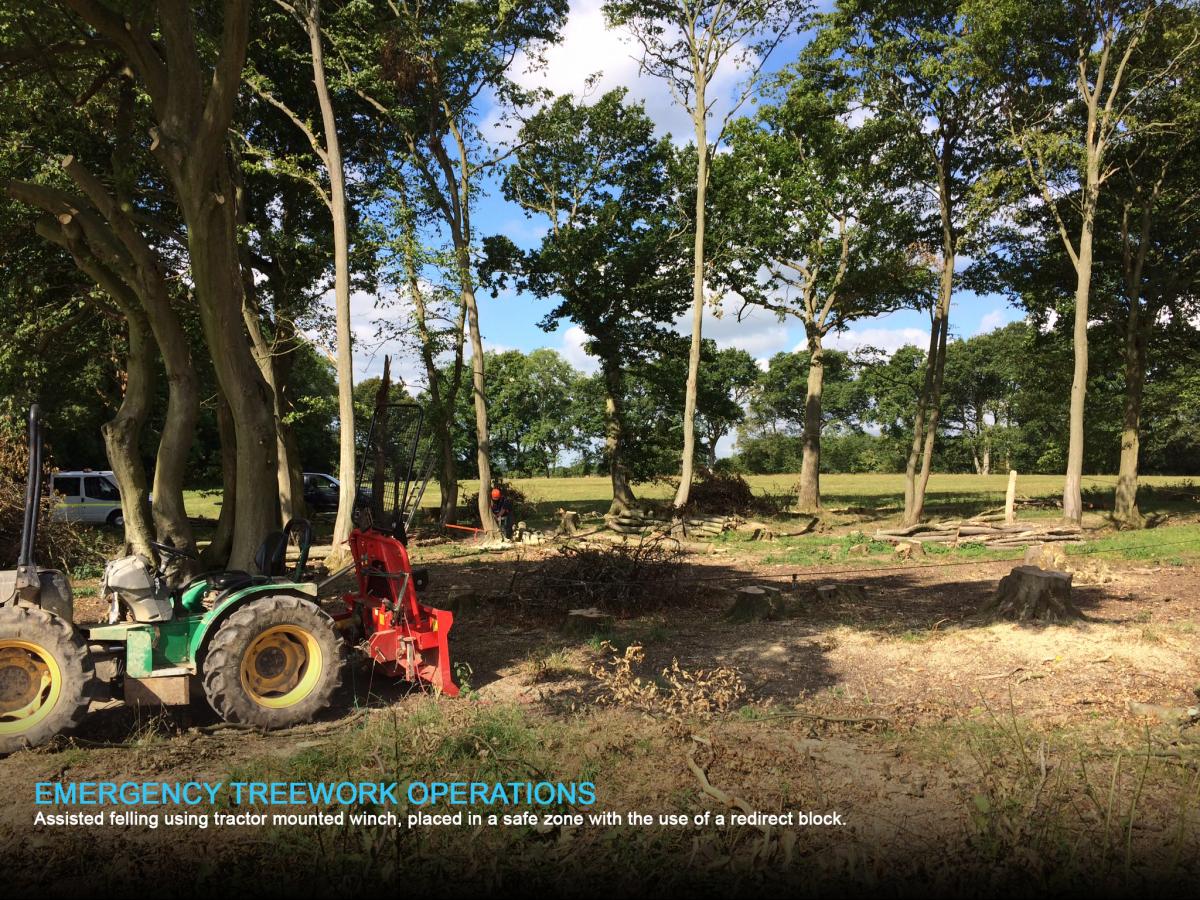
This presented a barrier in that amenity workers had to go through medium tree felling and then forestry based units, (individual windblow) in order to learn the necessary skills that could equally be required in a non-forest setting.
Recently the City & Guilds NPTC units have been updated, resulting in the development of new units with a slightly different target market - the amenity sector, and a consolidation of the forestry units into one qualification.
Emergency Treework Operations – this a unit that covers the skills to deal with three main tree emergency situations that might occur or be needed in amenity settings following storm damage.
Where whole trees have been uprooted techniques are taught to deal with a root plate including the specialist cuts and methods to restrain with a winch. Trees that have partially blown may need to be felled, and if this can be done in the direction of lean this is also covered, as well as trees with damaged tops still attached.
Following storm damage some trees may be compromised and required assisted fell techniques (perhaps roots lifted, or top snapped out) to take them in a direction against their lean using a rope based system or a winch system for heavier material.
Finally in situations where tree tops have been damaged and torn out the breakdown of large hardwood crowns is also covered where part of a tree has blown out and is perhaps larger than experienced in a basic felling course.
There is substantial emphasis on the site evaluation taking into consideration various scenarios of utilities and other obstructions.
It can be completed following chainsaw maintenance, crosscutting and felling trees under 380mm units (CS30 & 31). The course is run between 3-5 days depending on experience and skill level with independent assessment.
Following on from the old CS 34 & 35 a new unit for forest workers or harvesting contractors who are required to deal with windblown forest crops Severing uprooted or windblown trees using a chainsaw can be taken after completing felling trees over 380 which mean trainees will already be familiar with winch operations as well as dealing with over guidebar cuts. The course is run over 2-3 days with independent assessment.
The skills cover the following scenarios -
- Windblown crop - Multiple windblown trees, often intermingles resulting in a need to carefully evaluate the safest starting point(s) and the best order to deal with the remaining trees.
- Partly windblown crop – some of the trees may be resting in adjacent canopies.
- Trees damaged, but roots not necessarily lifted or upright. Trees often described as ‘A’ framed or snapped, this top needs to be assessed to check whether it can be removed safely, if not felling methods need to take into account the impact this section might have on directional control.
During both training courses hand winch techniques are demonstrated and practiced, and once everyone is familiar with these methods a tractor mounted winch is frequently utilised to minimised the manual handling of, material and aid processing, by for example pulling trees to one area for snedding and then to another for crosscutting, minimising the need to handle brash or stack logs. Using a powered winch also commercially realistic, with discussion about managing safety when working alongside machinery, which in industry is always going to be the case with windblown crops.
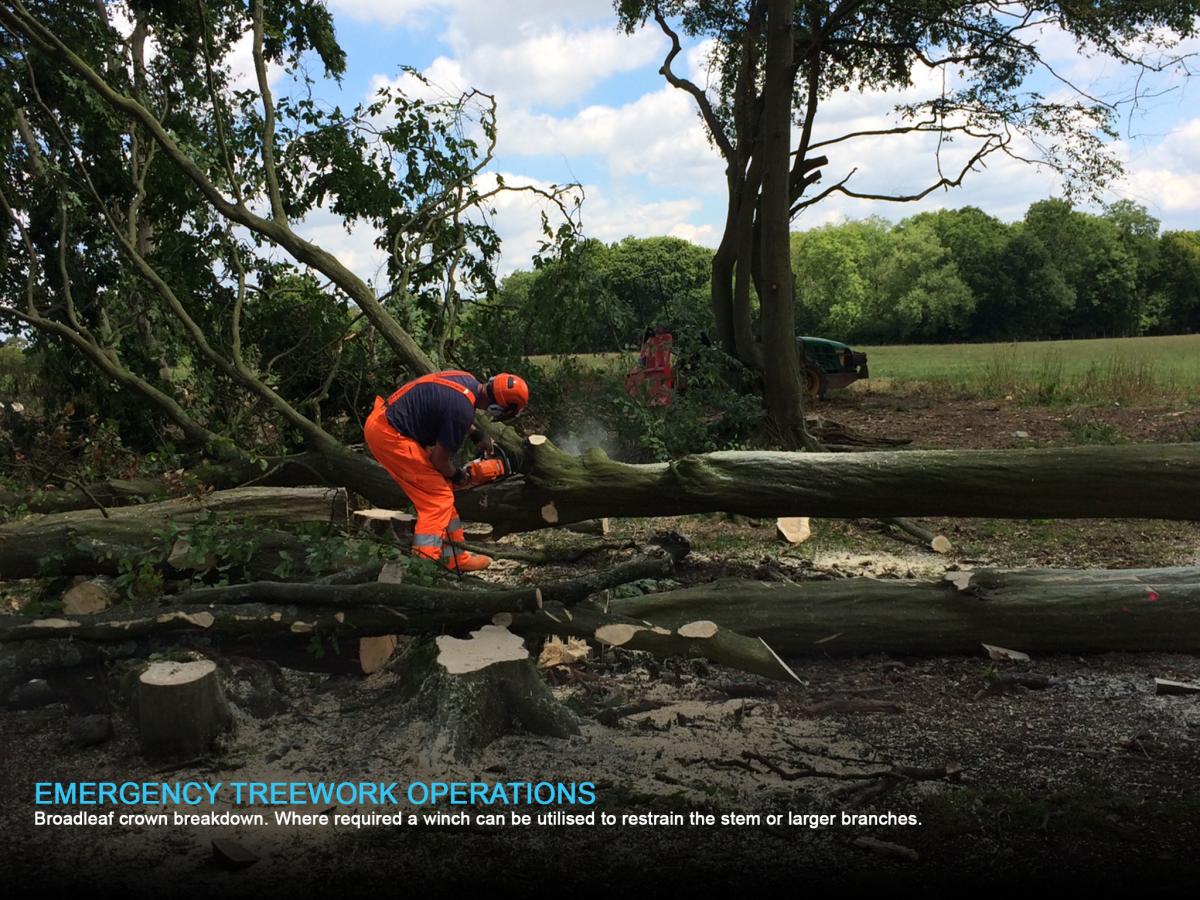
All of our training team are Lantra approved arborist instructors. Get in touch to get yourself booked on to one of our many courses including chainsaw training, tree cutting courses and LOLER inspection courses.


